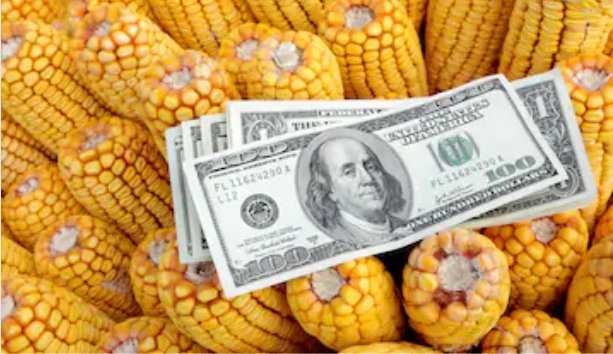Brazil: domestic market of corn remains under selling pressure by growers

The Brazilian domestic market remains under selling pressure by growers. As we have already pointed out, in October and now in November, growers began to exert additional selling pressure at any price, finding part of the resumption of exports as an alternative, but at lower-than-expected prices. They found some internal demand, however, with consumers taking advantage of more sellers to bring down internal prices as much as possible. The good condition of the summer crop and the good window for the 2022 second crop does bring some moderation. It is just important to emphasize that there is still a way to go until the confirmation of a Brazilian second crop along with the next US crop.
Prices do not stabilize at the top, this is an old saying in the market. Corn in the domestic market seems to be converging to this traditional version. After record prices in the first half of the year, unprecedented production losses of the second crop and new record prices, the domestic market seems to find some moderation after a year of extremely high costs for the meat sector. The consumer sector sought its supply strategies, with washouts, imports, purchases in advance from cooperatives and cereal companies, as well as the use of the wheat crop at the end of the year. On the other hand, growers who had record prices ahead of them waited too much in a market that already seemed to be on the edge.
This set of actions does not change the supply and demand scenario, that is, there is no more corn left or missing. But, certainly, the attitudes adopted preventively by consumers served to control a situation of potential shortages and lack of alternatives. We can consider that if there was no decision to go to Argentina and import almost 1 mln tons, make purchases in Paraguay of almost 2 mln tons, absorb washouts from trading companies at prices BRL 20 above export levels, as well as absorb regional volumes in the middle of the harvest of the second crop, the Brazilian domestic market today would now cope with supply shortages. The market initially paid dearly to be able to neutralize a situation of a worse trend, as we could now have 30/35 mln tons of exports, with consumers without stocks and at the mercy of selling interest.
Undoubtedly, the action of growers in recent days is surprising. The factors have already been evidenced in our latest publications, that is, need for cash, little motivation to sell soybeans, difficulties in purchasing inputs on credit, difficulties with barter packages, pressure to release warehouses, good weather in the summer crop, and good planting window for the 2022 second crop accelerated selling interest. However, it seems that the acceptance of lower prices is closely linked to the need for liquidity and space.
Last week, exporters resurfaced, without high prices, but offering some liquidity between BRL 70/75 in Mato Grosso, BRL 74/75 in Goiás, and BRL 83/85 at ports, in some situations even a little better. Exports are trying to generate a part of the absorption of this excess of supply generated by growers at this moment. Exports have now arrived in November at 2.9 mln tons scheduled for shipments, with 15.6 mln tons accumulated between February and November. As we still have December and January shipments and business with commitments for these months, it seems natural to expect exports of 18 mln tons in the business year.
Thus, there is nothing different from what is expected for the supply and demand picture, in terms of internal demand, exports, forecasted imports and stocks. What helps a little in this moderation process, besides the factors already mentioned, is the good climatic condition of this spring, enabling the planting and development of the summer crop and opening a good window for the second crop. Corn, in Brazil’s Southern region, is in a critical stage for productivity definition, that is, pollination and silking. Despite having developed very well so far, the pollination phase is always determinant for production, and there is a need for sequential moisture to fill the pods.
The rain was fair to excellent between Paraná and the north of the country last week. Therefore, both soybeans and corn advance in good conditions and without signs of stress in such regions. It raises concern to see another week without good rain in Rio Grande do Sul and Santa Catarina. The timing of crops is important for productivity and will be essential until January. There is a good rain forecast for this week, including a lot of rain in Argentina. It seems that, if confirmed, the situation of below-normal rain this November will be solved. Thus far, there has been no critical situation of water stress in southern Brazil and Argentina in this summer crop.
Read also
Wheat in Southern Brazil Impacted by Dry Weather and Frosts
Oilseed Industry. Leaders and Strategies in the Times of a Great Change
Black Sea & Danube Region: Oilseed and Vegoil Markets Within Ongoing Transfor...
Serbia. The drought will cause extremely high losses for farmers this year
2023/24 Safrinha Corn in Brazil 91% Harvested
Write to us
Our manager will contact you soon



